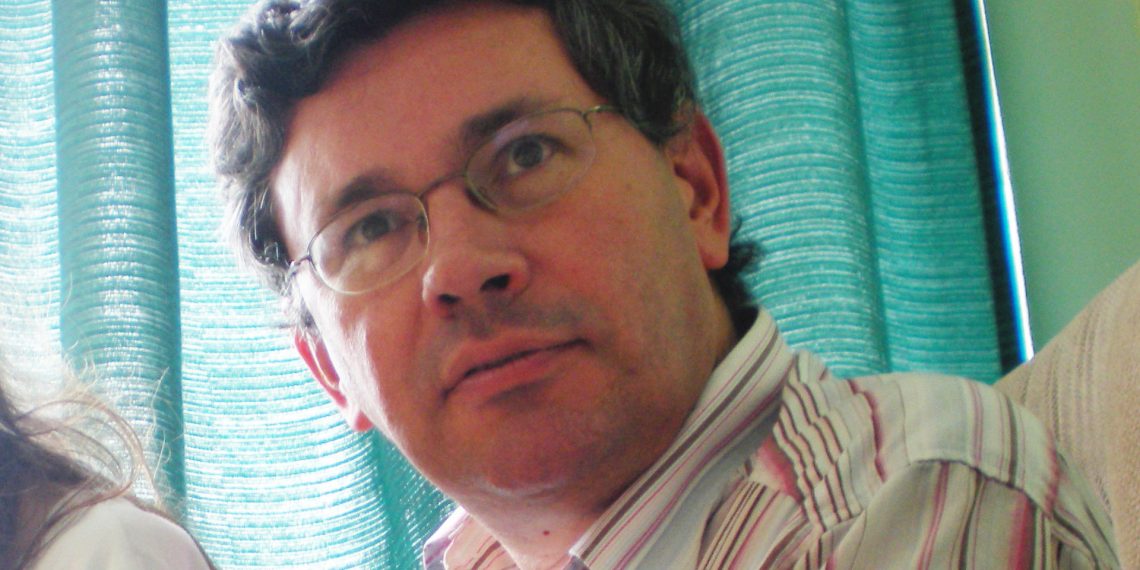Name: Peter Van Roy
Name of the company: Université catholique de Louvain
Business area:Education
Position in the company: Professor
INESC TEC centre with which collaborated: High-Assurance Software Laboratory (HASLab)
Project managers (INESC TEC): Carlos Baquero and Ali Shoker
Title of the projects: Syncfree and LightKone
What is your professional background with INESC TEC?
My research group at the ICTEAM Institute at UCL collaborated with INESC TEC in two European projects: SyncFree (Seventh Framework Programme, 2013-2016), focused on large-scale computation without synchronisation, and LightKone (Horizon 2020, 2017-2019), dedicated to lightweight computation for networks at the edge. UCL was the coordinator of the LightKone project and INESC TEC was the work package manager for WP3, which focused on the runtime system for edge computing developed in the project. In addition, INESC TEC contributed significantly to all the project’s technical work packages (WP2, WP4, WP5, WP6 and WP7).
Briefly describe the main goals of the project you are carrying out in collaboration with INESC TEC.
Together with INESC TEC and other partners, we collaborated in several activities within the context of the European projects mentioned above (SyncFree and LightKone). We worked directly with INESC TEC on a formal model for deduction with partial information about causality, namely what one can deduce when only partial information is known about causal relationships in a distributed system. We also used the advanced CRDT data structure designs developed by INESC TEC in several parts of both SyncFree and LightKone (see below).
Which are the main results of the project?
A recent major outcome of my collaboration with INESC TEC was the LightKone Reference Architecture (LiRA), documented in a whitepaper, and released by the LightKone project in December 2019. INESC TEC researcher Ali Shoker managed the whitepaper. An important precursor to this whitepaper was the book chapter Programming Models and Runtimes, part of the book Ultrascale Computing Systems, published in April 2019.
LiRA is designed as an extension of the OpenFog Reference Architecture, and it defines two data management principles to greatly simplify data management over the cloud-edge spectrum. One of the main unsolved problems in edge computing today is how to manage the massive data transfers from the edge to the cloud and back. LiRA proposes a concrete solution to this problem. We have developed several software artefacts to validate LiRA at several levels, primarily Antidote, Achlys (which includes Lasp, see below), Grisp, and Legion.
A second major outcome of our collaboration was the Lasp programming model implemented for large-scale deployment (up to 1000 nodes), which was executed and evaluated at large scale in collaboration with INESC TEC. Lasp is a programming model designed for execution of reliable programs on an unreliable edge network. To provide reliability, Lasp implements convergent distributed data structures called CRDTs (conflict-free replicated data structures.) INESC TEC designed several of the CRDTs, and the Institute collaborated in the effort to scale up Lasp up to 1000 nodes (published in PPDP 2017). This software is available as open-source up to the present day (www.lasp-lang.org).
What is your opinion on your experience working with INESC TEC?
The collaboration with INESC TEC was a rewarding one that led to several major publications and a large-scale software system. I consider INESC TEC to be a world-class research organisation in my area of expertise, namely large-scale distributed system and distributed data structures.
What is the possibility of future collaborations with INESC TEC?
Our collaborators have submitted a follow-up European research proposal named Continuum to the June 17, 2020 call ICT-40-2020 “Cloud Computing: Towards a Smart Cloud Computing Continuum”. Both UCL and INESC TEC are partners in this proposal. The main idea of Continuum is to automate consistent data management over the full cloud-edge spectrum, building on the results of SyncFree and LightKone. This will eliminate one of the main sources of complexity in current edge computing platforms.




 News, current topics, curiosities and so much more about INESC TEC and its community!
News, current topics, curiosities and so much more about INESC TEC and its community!